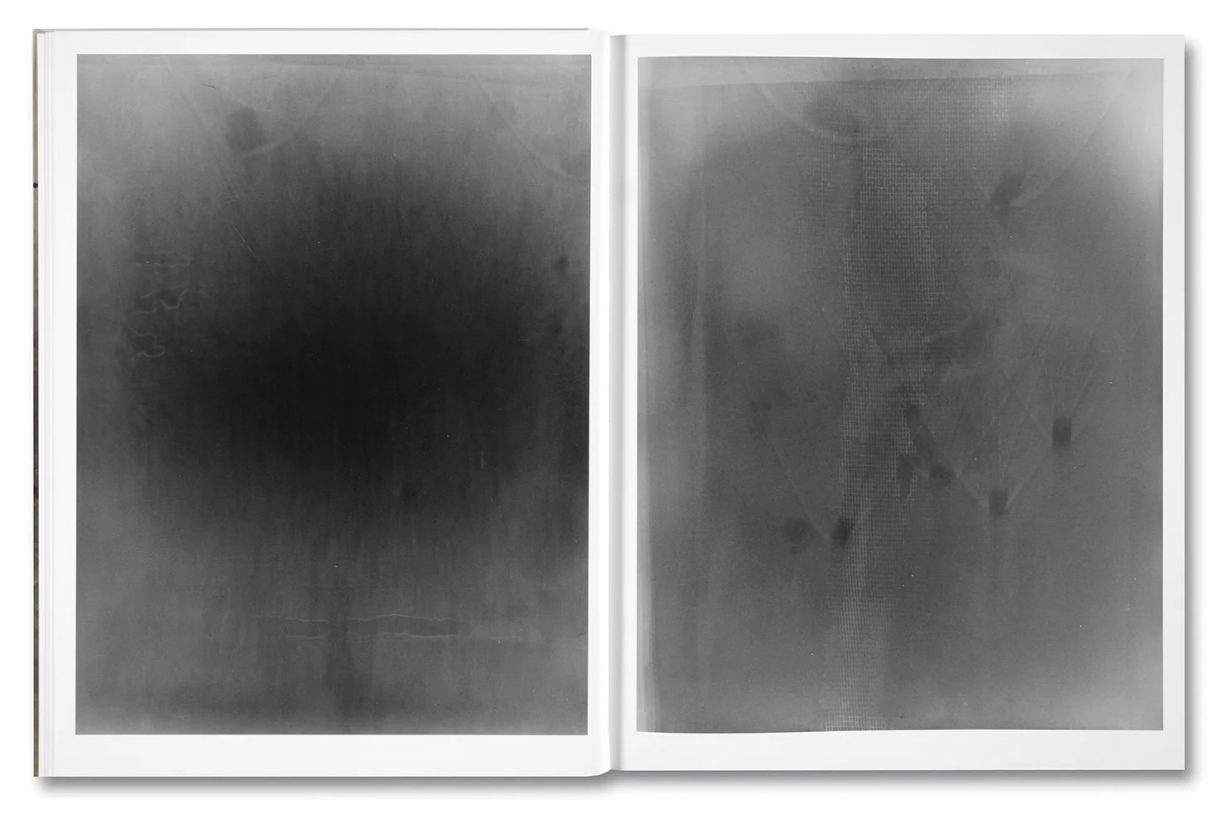Socorro! is as much an exercise in understanding what images depict as it is interrogating our impulse to decipher the unknown

‘What am I looking at?’ asks American cultural critic David Levi Strauss in the opening sentence to his essay ‘The Aesthetics of Unknowing’ – one of two texts that accompany multidisciplinary artist Lucy Raven’s large-format photobook Socorro! It’s a good question, because leafing through the pages of shadowgrams that make up the titular series is as much an exercise in trying to understand what the images depict as it is in interrogating our own impulse to decipher the unknown.
Each of the 60 shadowgrams, which visualise flow patterns and are made from imprints on photosensitive paper, is marked by smudges that drift across its grey surface. Some depict faint grids that bloom from different parts of the images, while others appear to be marred by stains. Many of the images are pocked with bright white specks, which on closer examination are revealed to be holes in the original shadowgram. This last detail presents a physical punctuation of the ephemeral, dreamlike quality of the images, and in doing so, draws attention to the materiality of their making. Not knowing what the subject of these images is allows for abstracted – almost meditative – looking. Yet there’s also an underlying sense of violence, both in the way the photographic paper is physically pierced and how the smudges visibly appear to force their way across the page.
It’s this dual effect of reading Socorro! that will most excite epistemology nerds (those of us who are endlessly fascinated by questions around knowledge production – basically, how do we know what we know? – and, as Strauss puts it, ‘the examination of the right to our beliefs. Are the beliefs we hold justified or not?’). Fortunately, though, readers aren’t doomed to remain in the limbo of the unknown. Alongside Strauss’s essay (which, besides a reflection on the epistemic qualities of photography, offers a concise and accessible history of shadowgrams and other forms of photography used specifically to record movement), art historian Pamela M. Lee’s text, ‘The Sound of Falling Bodies’, dives into the technological aspects of the shadowgram and how these were used to study ballistics, resulting in the advancement of such fields as weapons manufacture, crime-scene forensics and aerodynamics. The title of Lee’s essay is a reminder that beyond the apparent silence of shadowgrams, the end result of much of the research for which they are deployed – which benefits bullets, missiles and bombs – is dead people.
The shadowgrams were produced at New Mexico Tech (located in the town after which the series is titled). Between 2021 and 2022 Raven enlisted the help of the ballistic sciences lab to construct a black-box room out of sheet rock, and proceeded to fire 3D-printed projectiles filled with magnesium, aluminium and gravel into the space, recording the motion of those materials on photographic paper. Like much of Raven’s work – which also spans video, installation art, performance, animation and soundworks – these shadowgrams are a continuation of the artist’s interrogation of Manifest Destiny, an American mythology that owes much of its success to the invention and development of firearms (which led to the deaths and displacement of native peoples across the American West). In the manner in which it exists in a zone between science and art, Socorro! is photography in its purest sense: the capture of light on paper, collapsing shadows present and past.
Socorro! by Lucy Raven. Mack Books, £65 (hardcover)